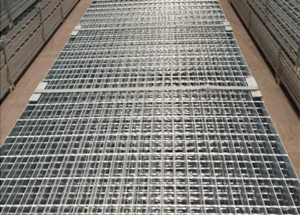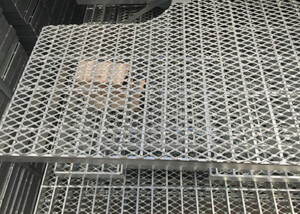Steel grating is a crucial component in various industrial, commercial, and residential settings due to its strength, durability, and versatility. However, to ensure its longevity and functionality, regular maintenance is essential. This Steel Grating Maintenance Tips guide provides a detailed overview of the best practices for maintaining steel grating, covering everything from routine cleaning to inspecting for wear and tear. By following these tips, you can prevent costly repairs, extend the lifespan of your grating, and ensure it remains safe and effective in its intended application.

The first and most basic aspect of steel grating maintenance is routine cleaning. Dirt, debris, and contaminants can accumulate on the surface of the grating, leading to potential safety hazards and accelerating corrosion. Regular cleaning with water and a mild detergent can help keep the grating free from buildup. In cases where there is heavy soiling or oil deposits, a pressure washer may be used to ensure a thorough clean. It is important to avoid harsh chemicals or abrasive tools during cleaning as these can damage the protective coatings on the steel and reduce its corrosion resistance.
Another critical aspect of maintaining steel grating is to regularly inspect it for signs of wear and damage. This includes checking for rust, corrosion, cracks, or any structural deformities that could compromise the grating’s integrity. Areas that are exposed to harsh environmental conditions, such as coastal regions or industrial sites with chemical exposure, should be inspected more frequently. If rust or corrosion is detected, it is vital to address it promptly by cleaning the affected area and applying a rust inhibitor or protective coating. Regular inspections help in early detection of issues, preventing them from escalating into major problems.
In addition to cleaning and inspection, it is also important to ensure that the grating is securely fastened to its supporting structure. Over time, the fastenings can become loose due to vibrations, heavy loads, or environmental factors. Regularly check the bolts, clips, or welds that secure the grating, and tighten or replace them as necessary. Loose fastenings can lead to movement or shifting of the grating, which not only affects its performance but can also create safety risks. Properly securing the grating is crucial for maintaining its structural integrity and ensuring safe usage.
Another tip for maintaining steel grating is to consider applying a protective coating, especially in environments where the grating is exposed to moisture, chemicals, or high traffic. Protective coatings, such as galvanization or powder coating, can significantly enhance the grating’s resistance to corrosion and wear. These coatings act as a barrier, preventing moisture and corrosive elements from coming into direct contact with the steel. Applying a protective coating is an investment that can greatly extend the lifespan of your steel grating, reducing the need for frequent repairs or replacements.

Finally, it is important to establish a regular maintenance schedule to ensure that all aspects of the steel grating are consistently monitored and maintained. This schedule should include routine cleaning, periodic inspections, tightening of fastenings, and reapplication of protective coatings as needed. By adhering to a structured maintenance routine, you can ensure that your steel grating remains in optimal condition and continues to perform effectively in its role. Regular maintenance not only enhances the safety and durability of the grating but also maximizes its value over time, making it a cost-effective choice for your facility.

